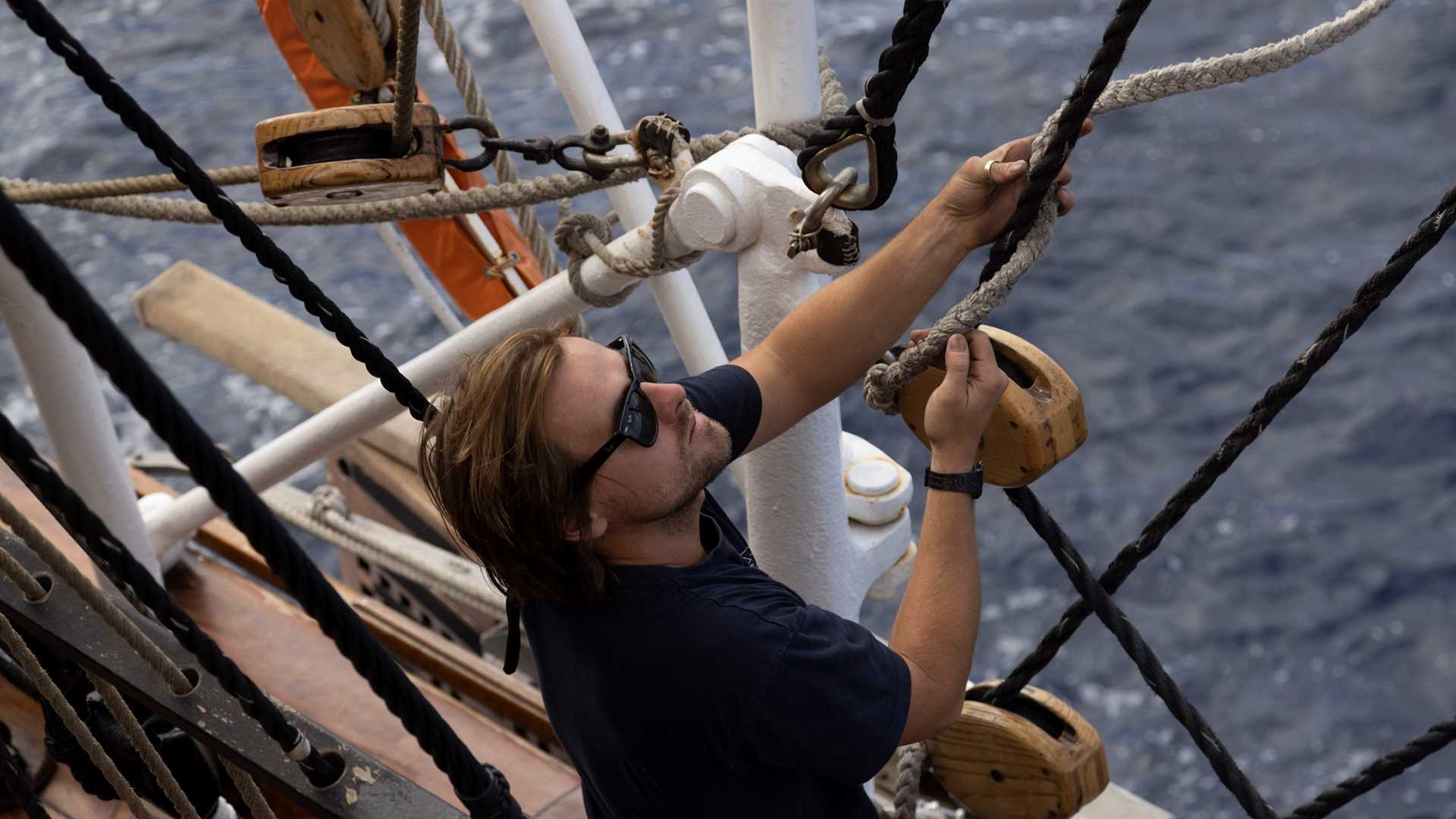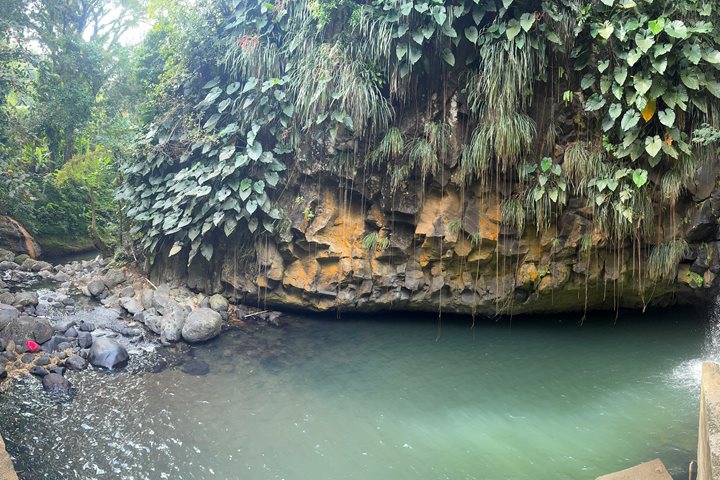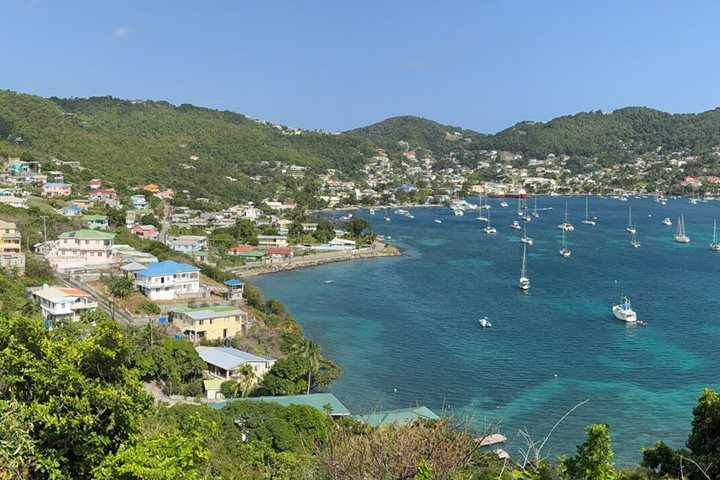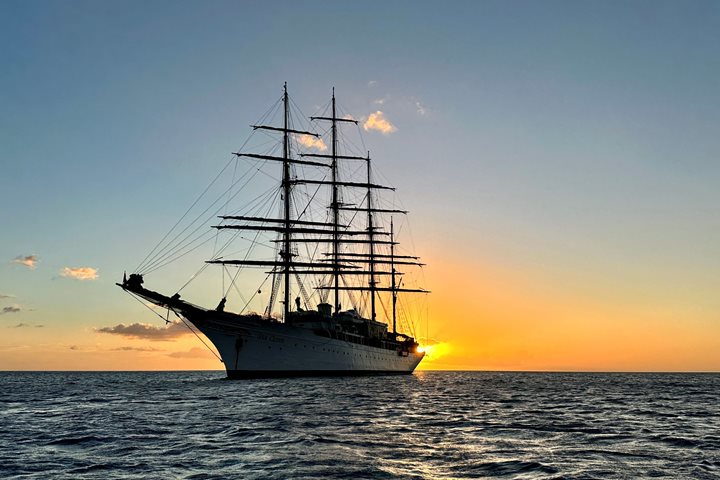After boarding the magnificent Sea Cloud in Bridgetown, Barbados, we settled in for a wonderful evening. By the next day, we reached the lee side of St. Lucia. We had wind gusts up to 25 knots from the starboard quarter and made 6.2 knots over water under sail. We were making such speed that the captain took in some sails.
Captain John Svendsen gave an introduction to the sails and the complex rigging of a square-rigger. Imagine a ship over 360’ long and displacing 2,600 tons moving effortlessly under wind power alone at 8mph. The beautiful off-white sails are made of a durable synthetic material in Poland and have an average life of about five years. The Sea Cloud carries almost 28,000 square feet (2,650 meters) of sail. Although built in 1931, it was designed to reflect the apogee of square-riggers of the 1880s.
Later that morning, I gave a talk on the history of slavery and how the vast economic wealth generated by cane sugar farming caused the enslavement of Africans in the Americas. Approximately 12 million Africans, chiefly from West Africa, were sold into slavery in the West Indies and the continental US. Slavery here began in the 1540s and did not end in the English colonies until 1807, and in Spanish Cuba almost 60 years later.
Today was a great day for sailing. Watching the crew scrambling up the mainmast, which is 180’ high, in a 25-knot wind with the ship rolling made me thankful for gravity under my feet.
In the afternoon, our photo instructor Aaron Raymond gave a talk on smartphone photography. Following a delicious tea on the port side, expedition leader Paula Tagle explained the alliance between Lindblad Expeditions and National Geographic. Captain Svendsen hosted a cocktail reception on the lido deck before we adjourned for a lovely Captain’s Dinner. The sea was easy tonight as we headed to bed. Tomorrow, Dominica.









